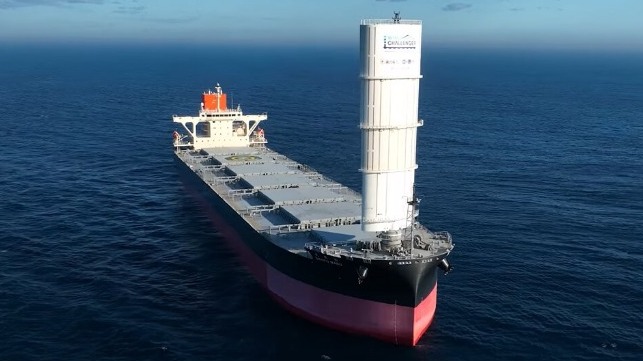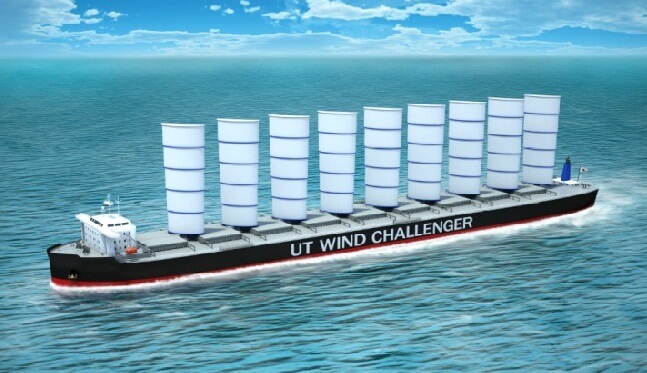Wind-Assisted Coal Carrier Begins Operations for Tokohu Electric

Japanese shipowner MOL and powerplant operator Tohoku Electric Power have begun commercial operations with a novel reduced-emissions vessel: a coal-carrying bulker with auxiliary wind power.
The 100,000 dwt Shofu Maru is the world's first vessel equipped with the MOL / Oshima Shipbuilding "Wind Challenger" telescopic wing sail. She will transport coal - primarily from Australia, Indonesia, and North America - on a long-term charter to Tohoku, Japan's fourth-largest power utility.
The Wind Challenger wing sail is expected to reduce greenhouse gas emissions from vessel operations by about five percent on a Japan-Australia voyage and about eight percent on a Japan-U.S. West Coast voyage when compared to a conventional vessel of the same type, according to MOL.
The sail is a fiberglass shell with a width of about 50 feet and a maximum height of about 175 feet. Its sections are nested so that it can retract to a fraction of its operating height to reduce air draft. The mounting point is forward, on the bow, and well clear of the cargo hatches.
The Wind Challenger program has been a long time coming. Research began in 2009 as a cooperative venture between the University of Tokyo, MOL, ClassNK, "K" Line and Oshima Shipyard. The program was supported by Japan's Ministry of Land, Infrastructure, Transport and Tourism.

Courtesy University of Tokyo
The project initially focused on designs with multiple wing sails mounted between hatches, capable of reducing vessel emissions by double-digit percentages, but it transitioned to a single-sail design as it matured (above). In January 2018, MOL and Oshima Shipbuilding took charge of the program and continued its development. It received AIP from ClassNK in 2019 and the first unit was completed in February.
Separately, MOL has also reached an agreement with the controversial wood-pellet producer Enviva to transport its pellet products using a wind-assisted bulker. The 63,000 dwt design would have both a Wind Challenger hard sail and an Anemoi rotor sail on its deck. The combination would reduce greenhouse gas emissions from transport by about 20 percent in total.
